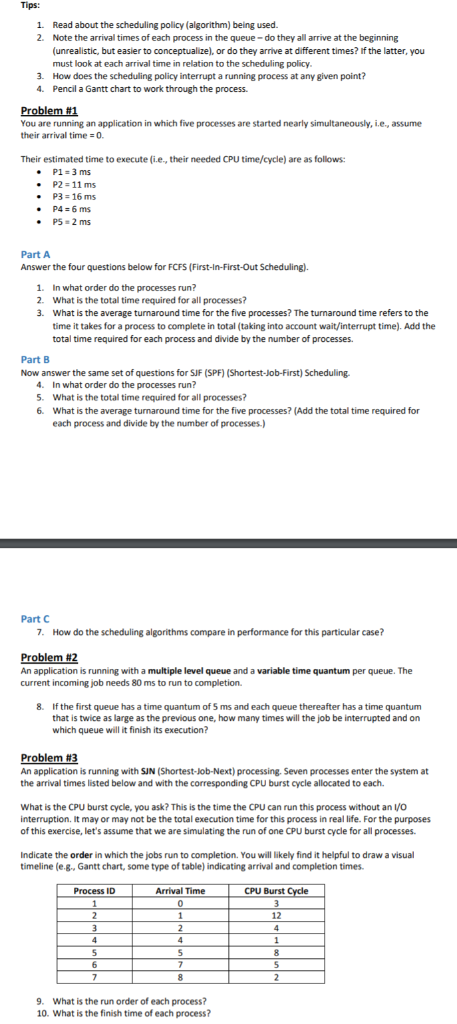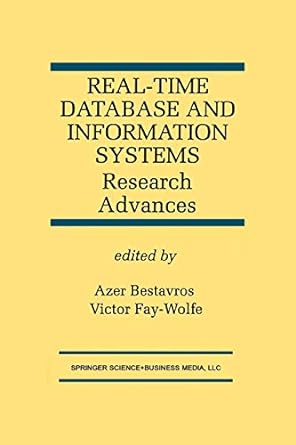
Tips: 1. Read about the scheduling policy (algorithm) being used. 2. Note the arrival times of each process in the queue- do they all arrive at the beginning (unrealistic, but easier to conceptualize), or do they arrive at different times? If the latter, you must look at each arrival time in relation to the scheduling policy 3. How does the scheduling policy interrupt a running process at any given point? Pencil a Gantt chart to work through the process. 4. Problem #1 You are running an application in which five processes are started nearly simultaneously, i.e, assume their arrival time 0 Their estimated time to execute (i.e., their needed CPU time/cycle) are as follows: P1 3 ms P2 11 ms P3 16 ms P4-6 ms PS 2 ms Part A Answer the four questions below for FCFS (First-In-First-Out Scheduling). 1. 2. 3. In what order do the processes run? What is the total time required for all processes? What is the average turnaround time for the five processes? The turnaround time refers to the time it takes for a process to complete in total (taking into account wait/interrupt time). Add the total time required for each process and divide by the number of processes. Part B Now answer the same set of questions for SIF (SPF) (Shortest-Job-First) Scheduling. 4. 5. 6. In what order do the processes run What is the total time required for all processes? What is the average turnaround time for the five processes? (Add the total time required for each process and divide by the number of processes.) Part C 7. How do the scheduling algorithms compare in performance for this particular case? An application is running with a multiple level queue and a variable time quantum per queue. The current incoming job needs 80 ms to run to completion 8. If the first queue has a time quantum of 5 ms and each queue thereafter has a time quantum that is twice as large as the previous one, how many times will the job be interrupted and on which queue will it finish its execution? Problem #3 An application is running with SJN (Shortest-Job-Next) processing. Seven processes enter the system at the arrival times listed below and with the corresponding CPU burst cycle allocated to each What is the CPU burst cycle, you ask? This is the time the CPU can run this process without an VO interruption. It may or may not be the total execution time for this process in real life. For the purposes of this exercise, let's assume that we are simulating the run of one CPU burst cycle for all processes Indicate the order in which the jobs run to completion. You will likely find it helpful to draw a visual timeline (e.. Gantt chart, some type of table) indicating arrival and completion times Process ID Arrival Time CPU Burst C 12 9. What is the run order of each process? 10. What is the finish time of each process







